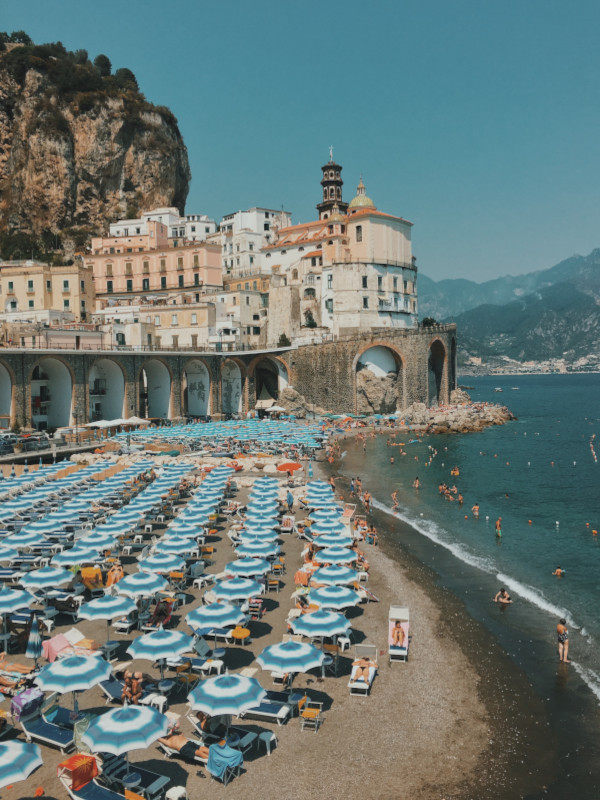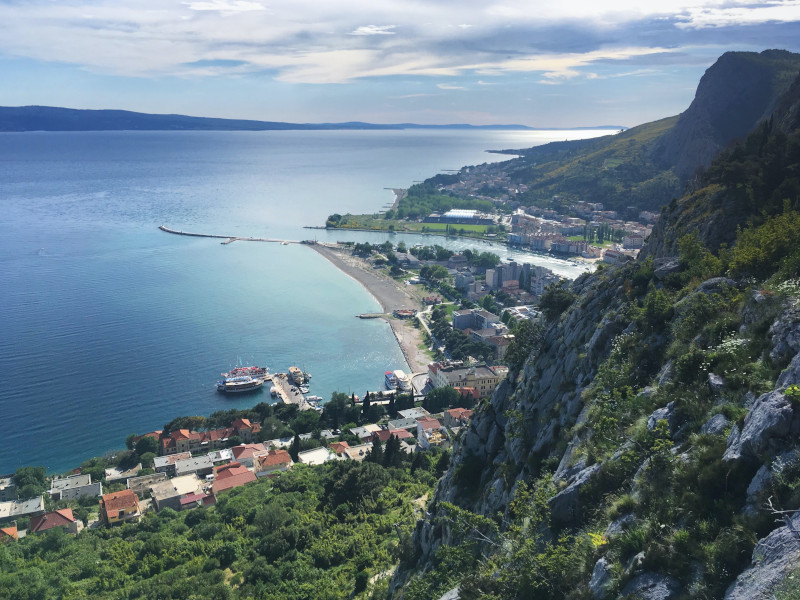SEA-LIMITHS
Sea Level Rise Impacts on Italian Hospitality
Project
The SEA-LIMITHS project stands at the forefront of a crucial investigation into the economic and environmental impacts of coastal sea-level rise, particularly focusing on the hospitality industry.
With a unique approach that harnesses the power of Artificial Intelligence (AI), this project aims to illuminate the often-overlooked transmission channel from climate change to hospitality infrastructure losses.
Why it matters
- Global concern: the rising sea level, a direct consequence of climate change, poses a significant threat to sandy beaches worldwide, crucial for the hospitality sector.
- Focus on Italy: Italy's coastlines, dominated by sandy beaches, face a critical challenge. Projections suggest severe beach erosion and loss, potentially decimating over half of the world's sandy beaches by 2100.
- Policy gap: current strategies inadequately address the quantified risks of sandy beach loss, an oversight this project seeks to correct.
Objectives
SEA-LIMITHS is dedicated to a detailed examination of sea-level rise's impacts, striving to achieve the following specific objectives aligned with the United Nations Sustainable Development Goals (SDGs):
- Beach Mapping and Climate Impact Assessment (SDG 13):
- Timeline: months 1-6
- Focus: analysing the current state of sandy beaches in Veneto and Emilia Romagna under the influence of climate change.
- Spatial Analysis of Hospitality in Coastal Areas (SDGs 8, 9, 11):
- Timeline: months 6-12
- Focus: understanding the spatial dynamics of the hospitality sector on these beaches.
- Economic Cost Calculation (SDGs 8, 9, 11, 12, 13):
- Timeline: months 12-15
- Focus: estimating the economic costs linked to rising sea levels.
- Impact on Hospitality Sector (SDGs 8, 9, 11, 12, 13):
- Timeline: months 15-20
- Focus: assessing the economic implications of such losses for the hospitality sector.
Bridging academia and policy
SEA-LIMITHS is not just an academic exercise but a project with profound policy implications. It aims to create a detailed map of the hospitality sector, integrate regional equilibrium models with macroeconomic analysis, and offer insights for sustainable and economically viable mitigation strategies in the Italian hospitality sector.
Sources
These sources provide a solid foundation for the research and analysis conducted in the SEA-LIMITHS project, focusing on the economic and environmental impacts of sea-level rise on Italy's hospitality sector.
Sandy beaches and shoreline changes
- Luijendijk, A., Hagenaars, G., Ranasinghe, R., Baart, F., Donchyts, G., & Aarninkhof, S. (2018). The state of the world’s beaches. scientific reports, 8(1).
- Vousdoukas, M., Ranasinghe, R., Mentaschi, L., Plomaritis, T., Athanasiou, P., Luijendijk, A., … & Feyen, L. (2020). Sandy coastlines under threat of erosion. nature climate change 10(3), 260-263.
- Depsky, N., Bolliger, I., Allen, D., Choi, J., Delgado, M., Greenstone, M., … & Hsiang, S. (2023). Dscim-coastal v1.1: an open-source modeling platform for global impacts of sea level rise. Geoscientific model Development, 16(14), 4331-4366.
Climate change and coastal impacts
- Antonioli, F., Falco, G., Presti, V., Moretti, L., Scardino, G., Anzidei, M., … & Mastronuzzi, G. (2020). Relative sea-level rise and potential submersion risk for 2100 on 16 coastal plains of the mediterranean sea. Water, 12(8), 2173.
- Perini, L., Calabrese, L., Luciani, P., Olivieri, M., Galassi, G., & Spada, G. (2017). Sea-level rise along the emilia-romagna coast (northern italy) in 2100: scenarios and impacts. Natural hazards and earth system sciences, 17(12), 2271-2287.
- Furlan, E., Derepasko, D., Torresan, S., Pham, H., Fogarin, S., & Critto, A. (2022). Ecosystem services at risk in Italy from coastal inundation under extreme sea level scenarios up to 2050: a spatially resolved approach supporting climate change adaptation. Integrated environmental assessment and management, 18(6), 1564-1577.
Economic damage assessment
- Prahl, Boris F., et al. (2018). Damage and protection cost curves for coastal floods within the 600 largest European cities. Scientific data 5.1: 1-18.
- Huizinga, H. J., de Moel, H., & Szewczyk, W. (2017). Global flood depth-damage functions. Methodology and the database with guidelines.
- Bosello, F., & Standardi, G. (2018). A Sub-national CGE model for the European Mediterranean Countries. The New Generation of Computable General Equilibrium Models: Modeling the Economy, 279-308.
AI / ML techniques
- Thelwall, M. (2001). A web crawler design for data mining. Journal of Information Science, 27(5), 319-325.
- Özen, İ. A. and Ilhan, İ. (2022). Opinion mining in tourism. Research Anthology on Implementing Sentiment Analysis Across Multiple Disciplines, 1506-1527.
- Fogarin, S., Marco, Z., Barco, M. K. D., Zennaro, F., Furlan, E., Torresan, S., … & Critto, A. (2023). Combining remote sensing analysis with machine learning to evaluate short-term coastal evolution trend in the shoreline of Venice. Science of The Total Environment, 859, 160293.
- Bianconi, A., Furlan, E., Simeoni, C., Pham, V. T., Vascon, S., Critto, A., … & Marcomini, A. (2023). Evaluating the risk of cumulative impacts in the Mediterranean sea using a random forest model.
- Ferrario, D., Furlan, E., Torresan, S., Maraschini, M., & Critto, A. (2022). Harnessing machine learning and deep learning applications for climate change risk assessment: a survey.
Publications
Our research has produced significant contributions to understanding climate change impacts on coastal hospitality:
- Published papers:
- Vilane Gonçalves Sales, “A Coastal Hospitality Sector Database for Vulnerability Assessments in Veneto and Emilia-Romagna, Italy”, 2025, 111921, ISSN 2352-3409
- Under review:
- "Spatial Analysis and Risk Assessment of Coastal Hospitality in Northern Italy"
Results
The SEA-LIMITHS project has successfully analyzed sea-level rise impacts on Italian coastal hospitality, delivering critical insights for policymakers and the hospitality sector.
Key findings
Database and risk assessment
We created the first comprehensive database of 10,022 coastal hospitality establishments (5,030 accommodations, 4,992 services) in Veneto and Emilia-Romagna. Our analysis reveals that 61% have direct beach access, with the northern Veneto coast showing extreme vulnerability (75-100% hazard levels).
Deliverables
The project produced an open-access database (Zenodo DOI: 10.5281/zenodo.14929876), methodology documentation on GitHub, and three scientific publications. Our integrated framework combines high-resolution climate modeling with AI-powered infrastructure analysis.
Policy impact
We provide evidence-based recommendations for targeted coastal protection, sustainable adaptation strategies, and regional coordination frameworks. With sea-level rise projections of up to 1 meter by 2100 threatening Italy's €33.7 billion coastal tourism economy, immediate adaptation is essential.



